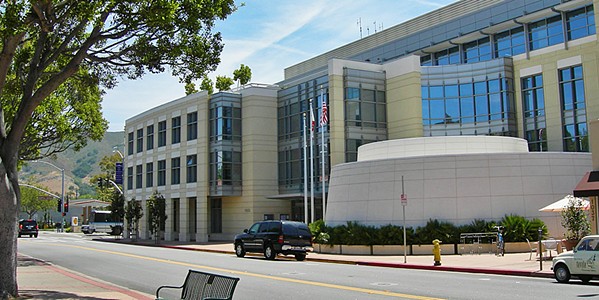While all eyes are on Gov. Gavin Newsom to decide how and when California will lift a statewide shelter-at-home order, it's individual counties that will be left with many of the decisions about life after the COVID-19 lockdown.
"Because of the scale and scope of California ... we'll be guided by local decision-making," Newsom said during an April 13 briefing, where he discussed for the first time how the state plans to approach lifting the order.

- Photo Courtesy Of SLO County
- PREPARING SLO County says it's preparing for a phasing-out of the shelter-at-home order enacted in response to COVID-19.
That time is likely still weeks away, but San Luis Obispo County officials are already putting together a plan for how they'll determine the next steps for the community.
On April 13, SLO County officials said they were assembling a "panel of experts" to guide the phasing-out of the local shelter-in-place order—as well as future policies that may be enacted to avoid a secondary outbreak.
The panel members will include local business, school, health care, and city leaders, as well as state and regional officials, according to the SLO County Office of Emergency Services.
The eventual plan—called the "road map" by the county—will be unveiled to the public at a future press briefing.
"Our goal is to ensure the guidelines are practical and effective," said Wade Horton, SLO County's emergency services director, "and balance a broad spectrum of medical, community, and economic considerations."
In Newsom's April 13 update, the governor laid out six "key indicators" that will determine when and how stay-at-home orders can be lifted. They include the ability to broadly test for COVID-19, to prevent infections in at-risk populations, to handle hospital surges, to develop adequate therapeutics, to effectively social distance at schools and businesses, and to know when to reinstitute stay-at-home orders if necessary.
Counties will look to those indicators—and additional guidance from the state—to determine their local policies.
"That guidance is the key," said Bruce Gibson, SLO County's 2nd District supervisor. "We've got to be tight with the state."
Gibson told New Times that he expects the county supervisors to be intimately involved with the development of the local road map. But he added that politicians and other community members still need to take a back seat to the advice of public health experts.
"We all understand the terrible impact this has had on the economy, but if we don't take seriously the advice of the public health experts, there'll be even worse impacts," Gibson said.
Under SLO County's emergency declaration order, Horton and Public Health Officer Penny Borenstein have been given broad authority to respond to the COVID-19 crisis as necessary. That will continue to be the case, Gibson said.
While the announcement of a community panel opens that process up to some public input, those two officials still hold the decision-making reins.
"That elected officials are not on the front line of this is the right thing," Gibson said. "[Borenstein and Horton] are the two individuals who have the responsibility to decide what orders get eased and lifted. ... They're just widening the policy discussion."
As of press time, SLO County had 124 confirmed cases of COVID-19, with three patients hospitalized. Δ
Comments